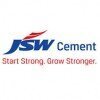Diploma Civil Engineer
50+ Diploma Civil Engineer Interview Questions and Answers

Asked in Reliance Industries

Q. What is the width of pavement for a two-lane road without a curb?
The width of pavement in a two-lane road without kerb depends on the traffic volume and speed.
The width can range from 6 to 12 meters.
Higher traffic volume and speed require wider pavement.
The pavement width should also consider the type of vehicles using the road.
The absence of kerb means the pavement should be wider to accommodate vehicles that may stray off the road.
The width of pavement should also consider the road alignment and terrain.
A wider pavement can also provide ...read more

Asked in Sobha

Q. How do you calculate the weight of steel?
The weight of steel can be calculated using the formula: weight = volume x density.
Calculate the volume of the steel component using appropriate geometric formulas.
Determine the density of the specific type of steel being used.
Multiply the volume by the density to obtain the weight of the steel.
For example, to calculate the weight of a steel beam, you would measure its dimensions and use the formula: weight = volume x density.
Diploma Civil Engineer Interview Questions and Answers for Freshers
Asked in St.Joseph's Institute Of Technology

Q. How much cement, sand, and coarse aggregate is needed for M25 design mix concrete?
The quantity of cement, sand, and coarse aggregate required for M25 design mix concrete depends on the mix ratio.
The mix ratio for M25 design mix concrete is 1:1:2 (cement:sand:coarse aggregate).
To calculate the quantity of cement, multiply the volume of concrete by the ratio of cement in the mix.
To calculate the quantity of sand, multiply the volume of concrete by the ratio of sand in the mix.
To calculate the quantity of coarse aggregate, multiply the volume of concrete by t...read more

Asked in JSW Cement

Q. What are the advantages of JSW cement?
Advantages of cement companies include job creation, economic growth, infrastructure development, and environmental benefits.
Job creation: Cement companies provide employment opportunities for a large number of people, both directly and indirectly.
Economic growth: Cement companies contribute to the economy by generating revenue, paying taxes, and supporting other industries.
Infrastructure development: Cement is a key material used in construction projects, helping to build ro...read more

Asked in Gulf Contracting

Q. What items should be checked during formwork inspection?
During formwork inspection, various items need to be checked to ensure safety and quality of the structure.
Check the formwork design and ensure it meets the specifications
Inspect the formwork materials for any damage or defects
Check the formwork supports and ensure they are stable and properly placed
Inspect the formwork ties and braces to ensure they are secure and properly placed
Check the formwork for proper alignment and levelness
Inspect the formwork for any bulges, warping...read more

Asked in Megha Engineering & Infrastructures

Q. What are the requirements for a fresher civil engineer?
Fresher civil engineers need technical skills, communication abilities, and a strong understanding of engineering principles.
Strong foundation in engineering principles, such as mechanics and materials.
Proficiency in software like AutoCAD and Civil 3D for design and drafting.
Good communication skills for teamwork and client interactions.
Understanding of construction methods and project management.
Ability to read and interpret blueprints and technical drawings.
Diploma Civil Engineer Jobs



Asked in H.G. Infra Engineering

Q. What is the maximum super elevation for plain and rolling roads as per IRC?
The maximum super elevation for plain roads is 1 in 20 and for rolling roads is 1 in 15.
Super elevation is the banking of roads on curves to counteract centrifugal force.
It helps in providing a comfortable and safe driving experience.
For plain roads, the maximum super elevation is 1 in 20, which means for every 20 units of horizontal distance, there is a rise of 1 unit.
For rolling roads, the maximum super elevation is 1 in 15, indicating a steeper banking compared to plain ro...read more
Asked in Dharamraj Construction

Q. What is the largest scale and smallest scale?
The largest scale in civil engineering is the macro scale, while the smallest scale is the micro scale.
The largest scale in civil engineering is used to study large structures and systems, such as bridges, highways, and dams.
The smallest scale in civil engineering is used to study the behavior of materials and components at a microscopic level.
Examples of the largest scale include designing a city's transportation network or planning a regional water supply system.
Examples of...read more
Share interview questions and help millions of jobseekers 🌟


Asked in Reliance Industries

Q. How can the construction industry develop infrastructure?
The construction industry can develop infrastructure through strategic planning, investment in technology, collaboration, and sustainable practices.
Strategic planning: Developing long-term plans and goals for infrastructure development.
Investment in technology: Utilizing advanced construction methods and materials to improve efficiency and quality.
Collaboration: Working with government agencies, private sector, and communities to identify infrastructure needs and develop solu...read more

Asked in JSW Cement

Q. JSW Cement Which shall we choose?
JSW Cement is a good choice for its high-quality products, strong brand reputation, and commitment to sustainability.
JSW Cement is known for producing high-quality cement products that meet industry standards.
The brand has a strong reputation in the market for reliability and consistency.
JSW Cement is committed to sustainability practices, making it a responsible choice for environmentally-conscious projects.

Asked in JSW Cement

Q. Manufacturing under strict quality controld, ensure consistency & durability
Manufacturing under strict quality control ensures consistent and durable products.
Implementing quality control measures such as regular inspections and testing
Using standardized processes and materials to maintain consistency
Training staff on quality control procedures to ensure adherence
Examples: Testing concrete strength in construction, inspecting welds in structural steel fabrication

Asked in L&T Construction

Q. What is the compressive strength of bat bricks?
Compressive strength of bat bricks refers to the maximum load-bearing capacity of the bricks under compression.
Compressive strength is an important property of bricks used in construction.
It is measured in units of force per unit area, such as N/mm² or psi.
The compressive strength of bat bricks can vary depending on factors such as the type of clay used, the firing temperature, and the moisture content.
For example, a typical compressive strength for bat bricks might be around...read more

Asked in UltraTech Cement

Q. What job opportunities are available at the Ultratech cement plant?
Ultratech Cement Plant offers job opportunities for civil engineers in the construction industry.
Ultratech Cement Plant is a leading cement manufacturing company in India.
They offer various job opportunities for civil engineers in the construction industry.
Job roles include project management, site supervision, quality control, and more.
Ultratech Cement Plant provides a challenging work environment and opportunities for career growth.
They also offer competitive salaries and b...read more

Asked in Reliance Industries

Q. What is SSD in a single-lane two-way road?
SSD stands for Safe Stopping Distance in a single lane two way road.
SSD is the minimum distance required for a vehicle to come to a complete stop in case of an emergency.
It is calculated based on the speed limit of the road and the type of vehicle.
SSD is important for ensuring road safety and preventing accidents.
For example, if the speed limit is 60 km/h, the SSD for a car would be around 73 meters.
SSD can be affected by factors such as weather conditions, road surface, and ...read more

Asked in UltraTech Cement

Q. A wall constructed to resist the pressure of an Earth filling is known as what?
Retaining wall
A wall constructed to resist the pressure of an earth filling is known as a retaining wall
Retaining walls are commonly used in civil engineering to prevent soil erosion and provide stability to slopes
They are designed to withstand lateral pressure exerted by the soil or other materials behind them
Retaining walls can be made of various materials such as concrete, stone, or timber
Examples of retaining walls include gravity walls, cantilever walls, and anchored wal...read more
Asked in Ashar Metro Towers

Q. Can you list the various steps involved in the concreting process?
The concreting process involves several steps to ensure the proper mixing, pouring, and curing of concrete.
Preparation of the site and formwork
Mixing of concrete ingredients
Pouring and placing of concrete
Compaction of concrete
Finishing and leveling the surface
Curing of concrete

Asked in NCL Alltek & Seccolor

Q. How can fresh graduates gain relevant experience?
Fresh students can gain minimum experience through internships, apprenticeships, and volunteering.
Look for internships in construction companies or government agencies
Apply for apprenticeships with experienced civil engineers
Volunteer for community projects that involve civil engineering
Join civil engineering organizations and attend events and workshops
Take online courses and certifications to enhance skills and knowledge

Asked in Icomm Tele

Q. What are common methods of curing concrete?
Common methods of curing concrete include water curing, membrane curing, and steam curing.
Water curing involves keeping the concrete moist by spraying or ponding water on the surface.
Membrane curing involves covering the concrete with a waterproof membrane to prevent moisture loss.
Steam curing involves applying heat and steam to accelerate the curing process.
Other methods include using curing compounds, wet coverings, and curing blankets.
Proper curing helps in achieving desir...read more

Asked in Reliance Industries

Q. What is the ruling gradient of a road?
The ruling gradient of a road is the maximum gradient allowed for a particular stretch of road.
It is the steepest gradient that can be used for a particular stretch of road.
It is determined by factors such as the type of vehicle, road conditions, and safety considerations.
The ruling gradient is usually expressed as a percentage or a ratio.
For example, a ruling gradient of 1 in 20 means that for every 20 meters of horizontal distance, the road can rise by 1 meter.
Exceeding the...read more

Asked in HIDADA

Q. What is the formula for calculating the weight of steel?
The weight of steel can be calculated using the formula: weight = volume × density
The formula for weight of steel is weight = volume × density
The volume of steel can be calculated using the formula: volume = length × width × height
The density of steel is typically around 7850 kg/m³
Example: If the dimensions of a steel plate are 1m × 1m × 0.01m, the volume would be 0.01 m³ and the weight would be 78.5 kg

Asked in Gulf Contracting

Q. What points should be considered prior to starting excavation?
Key considerations before excavation include site assessment, safety measures, and environmental impact.
Conduct a thorough site survey to identify underground utilities, such as water, gas, and electricity lines.
Check local regulations and obtain necessary permits to ensure compliance with legal requirements.
Assess soil conditions and stability to prevent collapses during excavation.
Plan for drainage to avoid water accumulation in the excavation area, which can lead to hazard...read more

Asked in Gulf Contracting

Q. What points should be considered while fixing rebar?
Points to consider while rebar fixing
Ensure proper spacing and alignment of rebars as per design
Use appropriate binding wire to tie the rebars together
Ensure proper lap length of rebars as per design
Ensure proper cover to the rebars to prevent corrosion
Ensure proper anchorage of rebars at the ends
Ensure proper placement of rebars in beams, columns, slabs, etc.
Ensure proper curing of concrete after rebar fixing

Asked in Kalpataru Projects International

Q. What is the difference between dry mortar and wet mortar?
Dry mortar is a mixture of cement, sand, and additives in dry form, while wet mortar is a mixture of the same ingredients in wet form.
Dry mortar is pre-mixed and requires only the addition of water before use.
Wet mortar is mixed on-site and can be adjusted for consistency as needed.
Dry mortar is easier to store and transport than wet mortar.
Wet mortar has a shorter shelf life than dry mortar.
Dry mortar is commonly used for small projects and repairs, while wet mortar is used ...read more

Asked in UltraTech Cement

Q. What is the typical salary increment ratio?
The ratio of salary increments varies depending on company policies and performance of the employee.
The ratio of salary increments is determined by the company's policies.
It can also be influenced by the employee's performance and experience.
Some companies may have a fixed ratio for all employees, while others may have a variable ratio based on performance.
The ratio may also differ based on the level of the employee within the company.
For example, a junior engineer may have a...read more

Asked in Larsen & Toubro Limited

Q. What are the different grades of concrete?
Grades of concrete are classifications based on the strength of the concrete mix.
Concrete grades are denoted by M followed by a number, such as M20, M30, etc.
The number after M represents the compressive strength of concrete in N/mm^2 after 28 days of curing.
Higher grade concrete mixes have higher compressive strength.
Common grades include M20, M25, M30, M35, M40, M45, M50, etc.

Asked in UltraTech Cement

Q. What are the best job opportunities at Ultratech Cement plant?
The best job at Ultratech Cement Plant depends on individual skills and interests.
Some may prefer managerial roles, while others may enjoy working in production or quality control.
Engineers may find opportunities in maintenance or project management.
Sales and marketing positions are also available for those with strong communication skills.
Safety officers and environmental engineers are also in demand.
Overall, the best job at Ultratech Cement Plant is one that aligns with you...read more

Asked in Nagarjuna Construction Company

Q. What is the water-cement ratio?
Water cement ratio is the ratio of the weight of water to the weight of cement used in a concrete mix.
Water cement ratio determines the strength and workability of the concrete.
A lower water cement ratio results in stronger and more durable concrete.
The water cement ratio should be carefully controlled to achieve the desired properties of the concrete.
For example, a water cement ratio of 0.5 means that for every 1 kg of cement, 0.5 kg of water is used.
Asked in Garima Construction

Q. What are the relevant I.S. codes in civil engineering?
I.S. code in civil engineering refers to Indian Standards code.
I.S. code stands for Indian Standards code.
These codes are developed by the Bureau of Indian Standards (BIS).
They provide guidelines and specifications for various aspects of civil engineering.
I.S. codes cover areas such as construction materials, design criteria, safety standards, and testing procedures.
For example, I.S. 456:2000 is the code for the design of plain and reinforced concrete structures in India.

Asked in Gulf Contracting

Q. Types of concrete and testing methods
There are various types of concrete used in construction, and each type requires different testing methods.
Types of concrete include plain, reinforced, pre-stressed, lightweight, and high-strength.
Testing methods include slump test, compressive strength test, flexural strength test, and water absorption test.
Slump test measures the consistency of fresh concrete, compressive strength test measures the strength of hardened concrete, flexural strength test measures the ability o...read more
Asked in St.Joseph's Institute Of Technology

Q. Which grade of concrete is required for paving?
The grade of concrete for paving depends on the traffic load and weather conditions.
The minimum grade of concrete for paving is M20.
For heavy traffic areas, M30 or higher grade concrete is recommended.
In areas with extreme weather conditions, air-entrained concrete is used to prevent cracking.
The mix design of concrete should be optimized for durability and skid resistance.
Proper curing and jointing techniques should be followed to ensure longevity of the pavement.
Interview Questions of Similar Designations
Interview Experiences of Popular Companies






Calculate your in-hand salary
Confused about how your in-hand salary is calculated? Enter your annual salary (CTC) and get your in-hand salary


Reviews
Interviews
Salaries
Users










